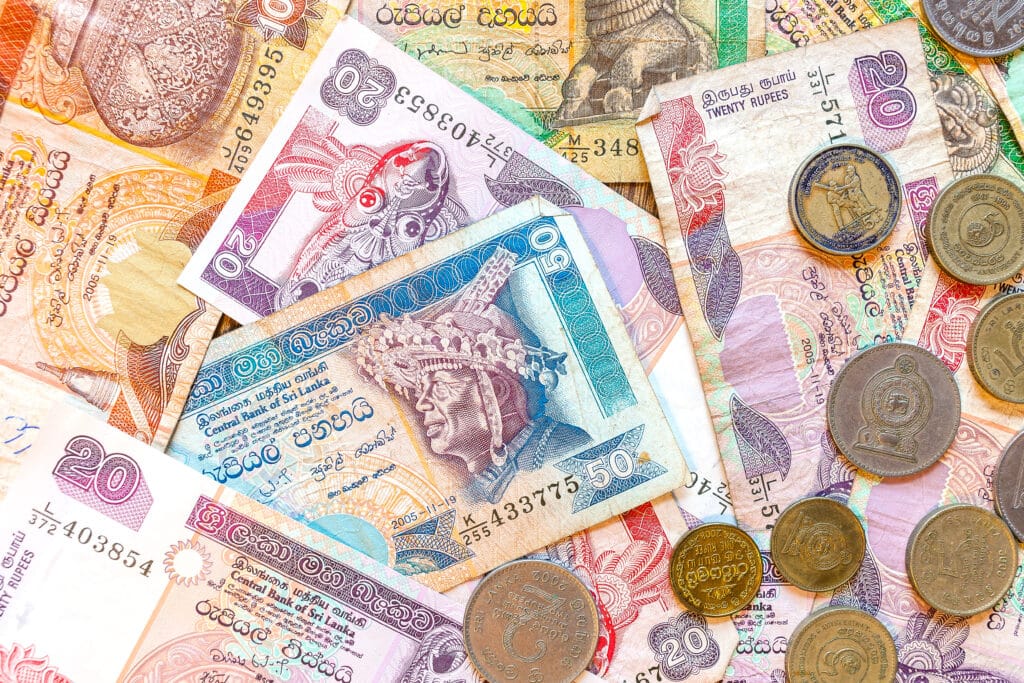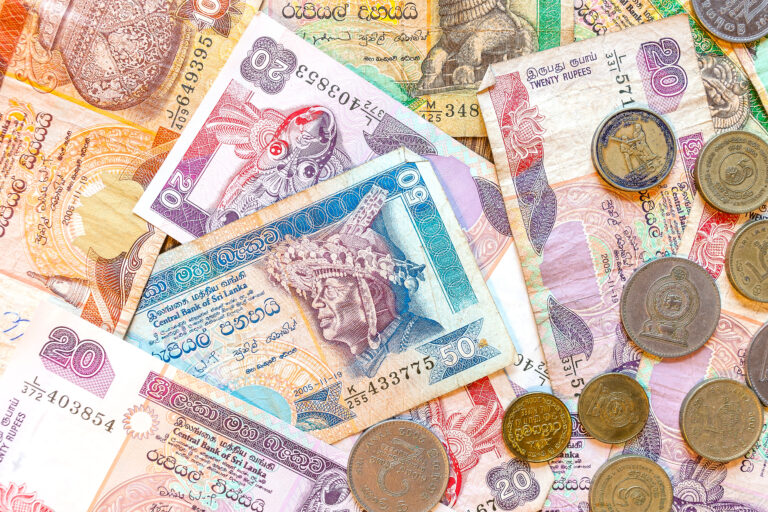The official currency of Sri Lanka is the Sri Lankan Rupee, which can be divided into 100 cents. “SLR” is the most commonly used abbreviation, but the official currency code is “LKR.” Sri Lankan coins come in denominations of 1, 2, 5, 10, 25, and 50 cents. Sri Lankan banknotes come in denominations of 10, 20, 50, 100, 200, 500, 1000, and 5000 rupees. The Sri Lankan Rupee is issued by the Central Bank of Sri Lanka. Sri Lankan currency has changed significantly over the years, especially since the country separated from Great Britain and established itself as an independent nation. Keep reading to learn more about the history of the Sri Lankan currency and how it has changed over the years.
4 Fascinating Fact about Sri Lankan Money
Sri Lanka has a deep history, and there’s a lot to learn about the country and its currency. Here are some interesting facts you may not have known about Sri Lanka and the Sri Lankan Rupee.
1. The Indian rupee was once used in Sri Lanka.
In 1825, when the British ruled the territory (then Ceylon), the British Pound (GBP) was established as the common currency. In 1836, however, Britain declared that the Indian Rupee (INR) would be the new official currency of the island. In 1948, Ceylon was granted independence from British rule (though it remained a dominion of the British Empire). Two years later, in 1950, the Central Bank of Ceylon was established. In 1972 Ceylon became a republic under the name Sri Lanka. At that time, the Sri Lankan Rupee was adopted as the official currency.
2. Sri Lankan banknotes have a unique printing pattern.
All printing of bills and minting of coins of the Sri Lankan Rupee (SLR) is done under the control of the central bank and governed by the country’s Monetary Control Act.
Sri Lankan rupee banknotes have an instantly recognizable, unique design. The reverse side of each banknote is printed with vertical lines, see-through imagery, and distinct watermarks. In addition, the raised texture differentiates the SLR banknotes for those with visual impairments. These key features are security measures that help prevent fraudulent reproduction of the currency.

3. Not all rupees are the same.
The word “rupee” is also used for currency in other nations, such as India. The abbreviation for rupee is “Rs.” To distinguish its currency from other rupees, Sri Lanka refers to its rupees as “SLR” or “LKR.” The rupees used in different nations are not interchangeable. The SLR is unique to Sri Lanka and is not used in other nations.
4. Banknotes feature cultural images.
Sri Lankan Rupee banknotes are interesting and tell a story of the rich history and culture of the country. The front of each banknote depicts a famous landmark in Sri Lanka. For example, the 1,000 SLR note depicts the newly constructed Ramboda tunnel, as well as an image of what the rock wall looked like before the tunnel was built.
The back of each bill pays homage to a dancer reflecting the culture. For example, the back of the 50 SLR banknote depicts a Thelme Netuma dancer next to a Yak Bera drummer.
About Sri Lanka
Humans have inhabited Sri Lanka for over 2 million years. The original inhabitants are believed to have been Stone Age hunter-gatherers. Around the 5th century BCE, the first northern Indian people immigrated to Sri Lanka and formed a community now known as the Sinhalese people.
Today 20 million people live in Sri Lanka. It is an island nation located southeast of the southern tip of India. Sri Lanka has two capitals: Sri Jayawardenepura Kotte and Colombo. Colombo is also the largest city.
The major industries in Sri Lanka today include tourism; mining; and the tea, coconut, and rubber industries.

